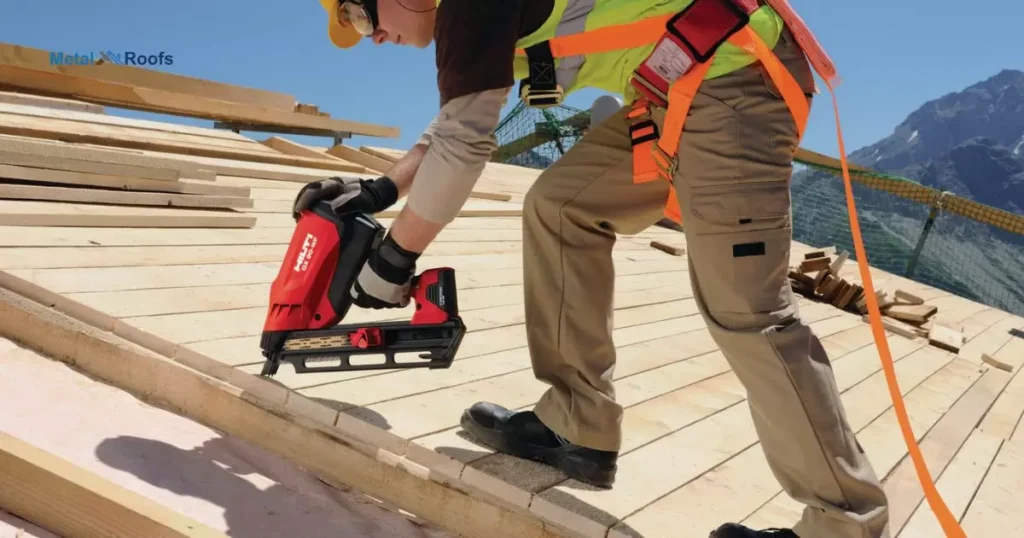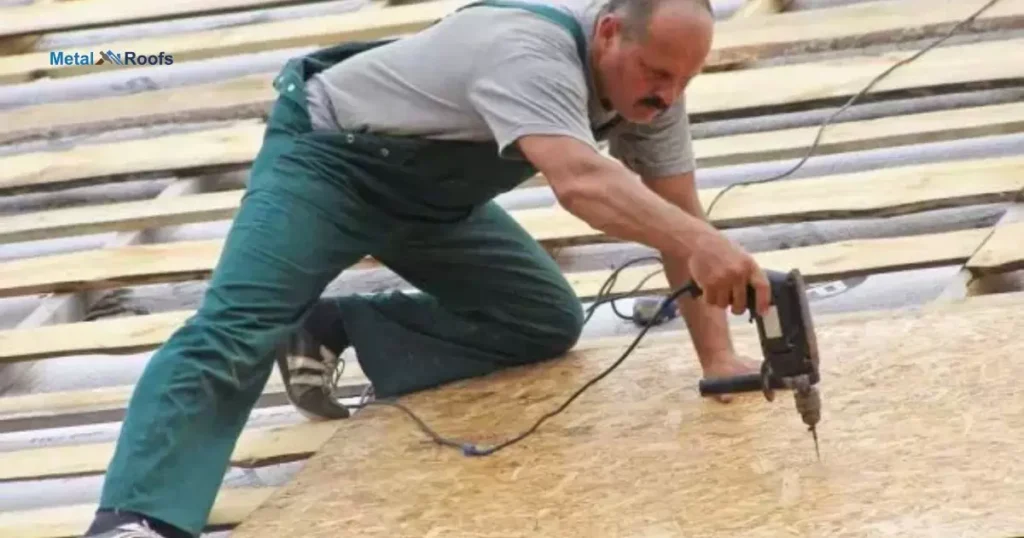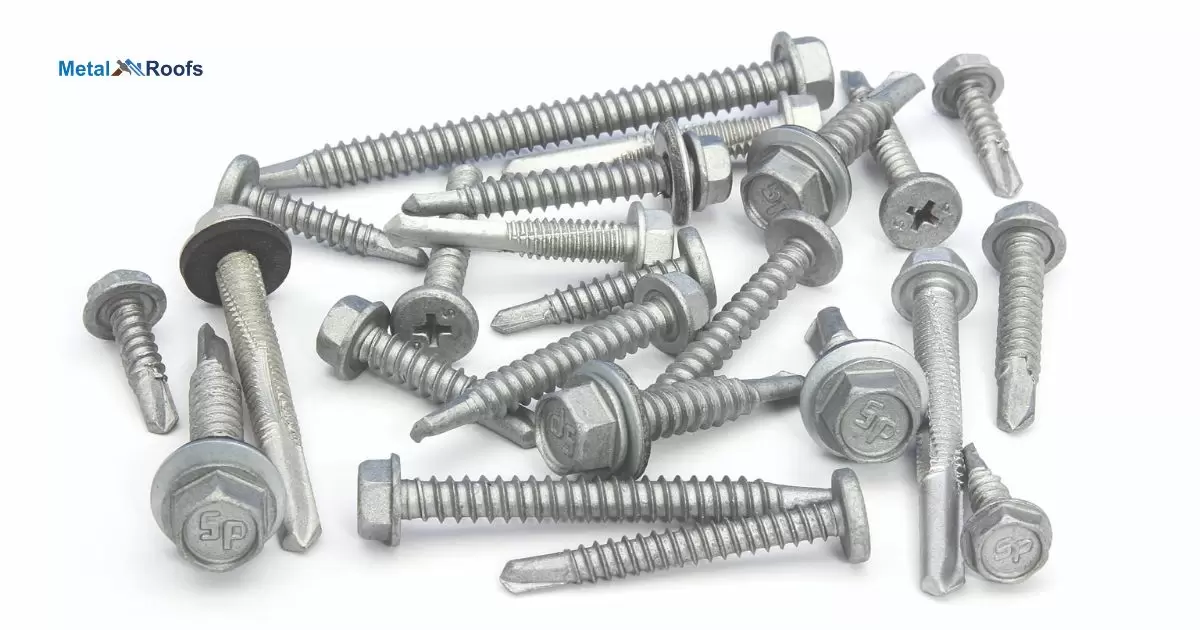Metal roof panels require proper screw placement for secure installation and longevity. The number of screws needed per panel depends on factors like panel size and type. Following manufacturer guidelines ensures correct screw quantity and placement. Using the right screws and installing them properly is essential.
Metal roofing offers superior durability but proper installation is key. How many screws per metal roof panel? Panel size, type, and manufacturer guidelines determine the screw count. Using correct screws and precise placement enhances longevity. Skimping on screws compromises integrity and safety.
Screw quantity and placement impact structural integrity. Manufacturers provide specific guidelines. Deviating from recommendations risks panel damage or detachment. Experienced roofers ensure proper screw usage for a secure, long-lasting roof.
Key Takeaways
- Determine the right number of screws per metal roof panel for secure installation.
- Typically, 20 to 40 screws are recommended, but follow manufacturer instructions.
- Proper attachment prevents warping and ensures structural integrity.
- Consider local codes and environmental factors like wind load.
Screw Line Spacing for Metal Roofing Over Metal Purlins
When installing metal roofing over metal purlins, screw line spacing is critical. The spacing ensures proper attachment and structural integrity. Follow manufacturer instructions for precise screw placement. Typically, spacing ranges between 12 to 24 inches along the purlins.
Color match vinyl siding can enhance the aesthetic appeal of your home while providing durability and low maintenance. Exceeding or undershooting this spacing can compromise the roof’s stability. Always prioritize safety and adherence to local building codes. Incorrect screw line spacing may lead to leaks or even structural failure over time.
Formula For Determining How Many Screws Will Be Needed
| Factors to Consider | Example |
| Roof Panel Size | 3 feet x 10 feet |
| Manufacturer’s Recommendations | 30 screws per panel |
| Substrate Material | Plywood or OSB |
| Roof Slope | 4:12 pitch |
| Environmental Factors | High wind zone |
To figure out how many screws you’ll need for your metal roof, start by measuring the length and width of each panel. Then, refer to the manufacturer’s instructions for the recommended screw spacing.
Divide the length of the panel by the recommended screw spacing to find out how many screws should be placed along the length. Do the same for the width. Multiply the number of screws along the length by the number along the width to get the total number of screws per panel.
Once you have the number of screws per panel, multiply it by the total number of panels to determine the overall quantity needed for your entire roof. It’s always a good idea to buy a few extra screws to account for any unexpected needs during installation.
What Is The Screw Pattern For ⅞” Corrugated Metal Roofing?
Here are two simple methods for figuring out how many metal roofing screws you need:
- Multiply your square footage by 0.80.
- Use 80 screws per roofing square, where each square is 100 square feet.
For example:
- If you have 3,000 square feet, multiply it by 0.80 to get 2,400 screws.
- Or if you have 30 roofing squares, multiply by 80 screws per square to get 2,400 screws.
⅞” Corrugated Screw Location For Metal Roofing
- You will need one screw for every foot of trim or flashing.
- To figure out how many screws you need for the panel’s side edge, divide the square footage by three, then divide that result by 1.5.
For example, if you have 3,000 square feet:
3000 ÷ 3 (panel width) = 1000, then divide that by 1.5 (screw spacing) = 667 screws.
If you’re using ⅞” Corrugated, you don’t need metal-to-metal screws for the side edge. You’ll only need screws for the R Panel/PBR Panel and Western Rib/7.2 Panel.
What Is The Correct Panel Side lap For ⅞” Corrugated Metal Roofing?
The main reason metal roofs leak is because the screws are not put in properly. Once you understand where to place screws, it’s important to learn how to install them correctly. Since your roof has many screws, watching this video is the best way to avoid leaks.
⅞” Corrugated Screw Location For Wall Panels Or Metal Siding
When setting up ⅞” corrugated wall panels or metal siding, position screws every foot along the panel’s length. Place them securely within the corrugation troughs for optimal attachment. Ensure screws penetrate the substrate for maximum stability. This method ensures the panels stay firmly in place, providing durability and structural integrity to your installation.
Properly locating screws in the corrugation troughs of ⅞” corrugated wall panels or metal siding is crucial for a sturdy installation. By spacing them every foot along the panel’s length and ensuring they penetrate the substrate, you guarantee a secure attachment.
Screw Location for R-Panel

When installing R-panel metal roofing, screw placement is crucial. Aim to position screws in the flat part of the panel, avoiding ridges. Distribute screws evenly along the panel’s length, with spacing typically recommended every 12 to 24 inches. Be attentive to the edges, ensuring screws are placed securely to prevent water infiltration.
To maintain structural integrity, always follow manufacturer instructions for screw placement. Overlooking proper screw location can lead to leaks and compromised stability. Take care to align screws precisely, adhering to guidelines to ensure a durable and weather-resistant metal roof.
Different Types of Metal Roofing
Metal roofing is a popular choice for residential and commercial buildings due to its durability, longevity, and aesthetic appeal. There are several different types of metal roofing materials, each with its own characteristics and advantages. Here are some of the most common types:
Steel Roofing: Steel roofing is one of the most common types of metal roofing. It is known for its strength, durability, and resistance to rust and corrosion.
Aluminum Roofing: Aluminum roofing is lightweight and highly resistant to corrosion, making it an ideal choice for coastal areas or regions with high humidity. It is also recyclable and energy-efficient, making it an environmentally friendly option.
Copper Roofing: Copper roofing is prized for its distinctive appearance and longevity. It develops a natural patina over time, giving it a unique and aesthetically pleasing look.
Zinc Roofing: Zinc roofing is known for its long lifespan and low maintenance requirements. Like copper, zinc develops a natural patina over time, which helps protect it from corrosion and weathering.
Tin Roofing: Tin roofing, often referred to as terneplate, is made from sheets of steel coated with a mixture of tin and lead. It offers good durability and weather resistance, but it requires periodic maintenance to prevent corrosion and maintain its appearance.
Galvalume Roofing: Galvalume roofing is made from a combination of steel and aluminum coated with a zinc alloy.
Standing Seam Roofing: Standing seam roofing features raised seams that interlock to create a watertight seal. It is available in various materials, including steel, aluminum, and copper, and is known for its sleek, modern appearance and superior weather resistance.
Corrugated Metal Roofing: Corrugated metal roofing consists of sheets of metal with alternating ridges and grooves. It is lightweight, affordable, and easy to install, making it a popular choice for agricultural buildings, sheds, and industrial facilities.
Each type of metal roofing has its own unique characteristics and advantages, so it’s essential to consider factors such as cost, durability, maintenance requirements, and aesthetic preferences when choosing the right option for your project.
Screws or Nails Which Is Preferred
When it comes to fastening metal roof panels, screws are generally preferred over nails. Screws offer better holding power and durability, ensuring that the panels remain securely in place even during harsh weather conditions. Screws are less likely to loosen over time compared to nails.
Screws provide tighter seals, reducing the risk of water leakage and potential damage to the roof structure. While nails may be quicker to install, the long-term benefits of using screws outweigh the initial convenience of nails. Therefore, for a reliable and long-lasting metal roof installation, opting for screws is the preferred choice.
Metal Roof Screw Pattern & Spacing Guide
When installing a metal roof, following the right screw pattern and spacing is crucial. The number of screws per panel typically ranges from 20 to 40, but always refer to the manufacturer’s instructions for precise guidance.
Proper spacing ensures structural integrity and weather resistance, preventing leaks and damage. Most manufacturers provide clear guidelines for screw placement and spacing to adhere to local building codes and withstand environmental factors like wind load.
By following these instructions diligently, you ensure a secure and long-lasting metal roof installation. Take the time to plan the screw pattern and spacing carefully before starting the installation process to guarantee a durable and reliable roof over your head.
Screw Down Frequency for a Metal Roof

When installing a metal roof, determining the screw down frequency is essential. The number of screws per panel varies based on factors like panel size and local building codes. Typically, you’ll need 20 to 40 screws per panel. Follow the manufacturer’s instructions precisely for proper installation.
Consult the provided guidelines for the specific panels you’re using. This ensures the roof’s structural integrity and weather resistance. Adhering to these instructions guarantees a secure and durable metal roof for your building.
Screw Line Spacing for Metal Roofing on a Solid Wood Substrate
When installing metal roofing on a solid wood substrate, the spacing between screw lines is crucial. The screw line spacing ensures the panels are securely fastened and the roof can withstand various weather conditions.
Typically, you’ll want to place screws every 12 to 24 inches along the panel’s length. This spacing provides adequate support and prevents the panels from warping or lifting during strong winds. Following manufacturer guidelines is essential to ensure proper installation and long-term durability of the metal roof.
Frequently Asked Questions
How Many Screws Per M2 Of Roofing?
Typically, you’ll use 6 to 12 screws per square meter of roofing for stability and support.
Where Do You Screw Metal Roofing Panels?
You screw metal roofing panels along the seams and edges. This ensures proper alignment and stability, preventing leaks and damage.
How Long Should Metal Roof Screws Be?
Metal roof screws should be long enough to securely penetrate both the roofing material and substrate, typically ranging from 1 to 3 inches in length.
Conclusion
Following manufacturer guidelines for screw quantity and placement is essential. Cutting corners compromises the metal roof’s integrity and longevity. Proper installation by experienced professionals ensures a secure, durable roofing system. Investing in quality materials and workmanship pays off in the long run.
Metal roofs offer superior protection and energy efficiency when installed correctly. Consulting with a reputable roofing contractor ensures adherence to best practices. Regular maintenance and inspections can identify potential issues early. With the right care, a metal roof can provide decades of reliable service.











